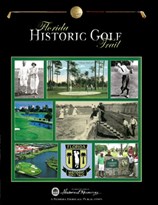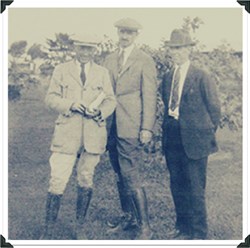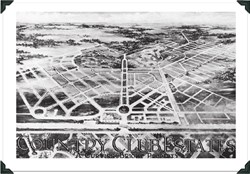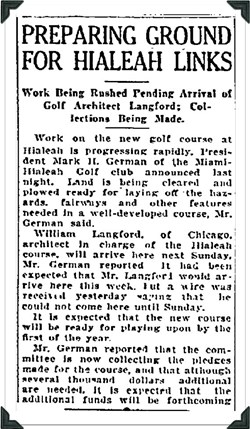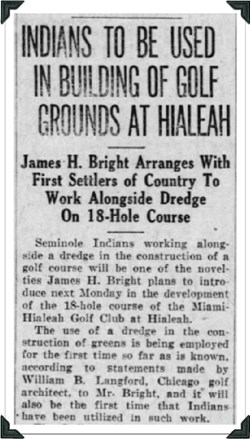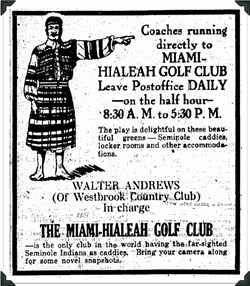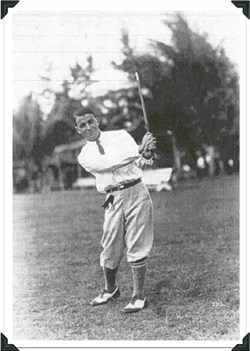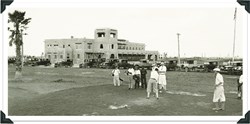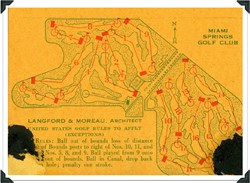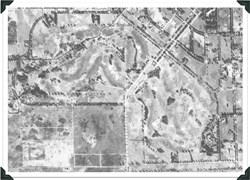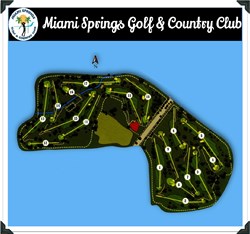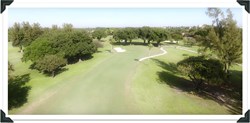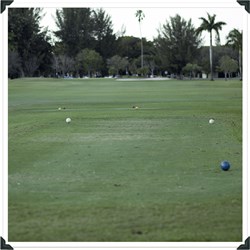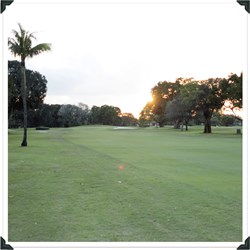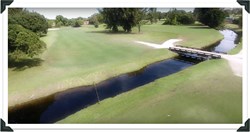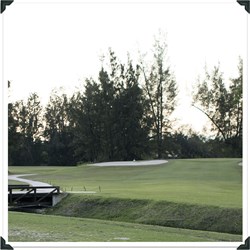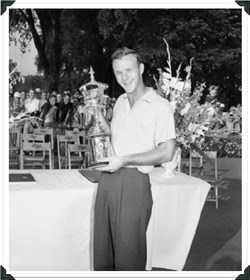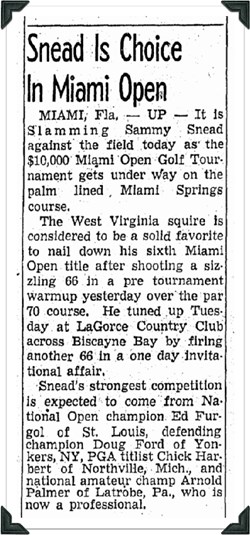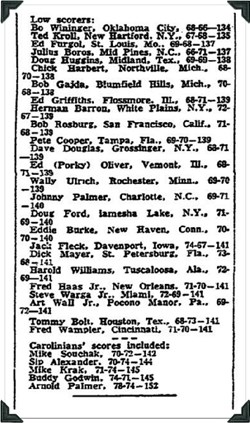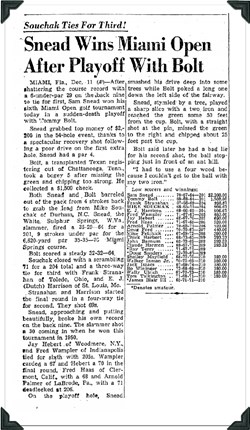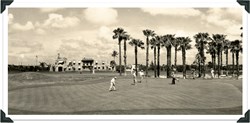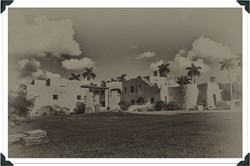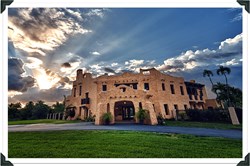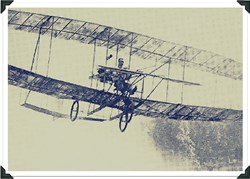Featured Golf Course
In this section learn more about the history of the course and its hometown, see a selection of historic and current images of the course, learn about what the course is like today, and discover nearby historic sites.
Miami Springs Golf and Country Club
History
The Miami Springs Golf and Country Club is located in the City of Miami Springs in Miami-Dade County.
Developers Glenn Curtiss and James Bright partnered with a local group of Miami golfers known as the “Miami Coconuts” to incorporate a golf course into the new city of Miami Springs in 1921. The firm of William Langford and Theodore Moreau of Chicago were chosen to design an 18-hole layout. Golf course plans were prepared by Langford, who made several visits to the course prior to and during construction.
Locals regarded the course as the best they had ever seen, and different from any other golf course in the Miami area. The golf course incorporated the latest type of hazards and traps, making the game interesting for all level of players. Known as the Miami-Hialeah golf course, it officially opened in 1923.
Since its beginning, the course had a connection with the local Seminole Indians. The grass on all the bunkers and banks along the canals was planted by hand by Seminole Indian women, and when it opened Seminole Indian men in native dress served as caddies.
Between 1949 and 1957, the Miami Springs Country Club became the center of legal disputes over racial segregation. Black players were only allowed access to the course on Monday, but they wanted to purchase rounds on other days and were refused. The legal battle that resulted would eventually make its way to the U.S. Supreme Court and after years of appeals and court battles, the Monday-only rule at Miami Springs was finally dropped by the city.
Today
The Miami Springs Golf and Country Club includes an 18-hole, par-71 golf course that features three sets of tees playing from 6,400 to 6,700 yards, is an enjoyable yet challenging course for all skill levels. The course emphasizes traditional and classic principals of course design that tests players decision-making process and shot making abilities, and invites players to “walk in the footsteps of legends.”
Local Knowledge
After winning the United States Amateur Golf Championship in Detroit, Arnold Palmer’s first effort as a professional golfer was at the 1954 Miami Open. The Miami Springs Golf and Country Club had hosted the Miami Open since 1925.
Arnold posted a 78 on the first day and 74 on the second and missed the cut by 6 strokes. Bob Rosburg went on to win the tournament. Arnold returned the following year to compete in the 1955 Miami Open, the last time it was held at the Miami Springs golf course. He did much better, finishing in a tie for eighth place, while Sam Snead won the rain- shortened tournament.
Inside the Leather
While standing on the tee box of the 3rd hole, look to your right and you will see the only remaining structure directly connected to the aviation pioneer and developer, Glenn H. Curtiss. Built in the Pueblo-Mission Revival architectural style in 1925, it was the home of Curtiss and his family until his death in 1930.
The mansion is a two-story structure covering nearly 15,000 square feet. Over the years, the Curtiss Mansion has been the victim of vandalism and three arson fires that nearly destroyed the building. Its restoration to the original 1925 condition was made possible in part by comprehensive documentation and photographs. It was locally designated as a historic site in 1987 and was placed on the National Register of Historic Places in 2001 as an individual structure and as part of a thematic group. The Curtiss Mansion reopened its doors to the public in April of 2012.
Glenn Curtiss is considered the “Architect of Aviation,” “The Henry Ford of Aviation,” and “Father of Naval Aviation.” His contributions to aviation history are reflected in exhibits at the Smithsonian Institution's National Air and Space Museum. Curtiss was awarded the Congressional Medal of Honor and the Distinguished Flying Cross for his work and efforts during World War I. He was inducted into the National Inventors Hall of Fame with 400 patents and over 500 inventions credited to him. Visit Curtiss Mansion or Glenn H. Curtiss Mansion and Gardens for more details.
Visit - Contact
Miami Springs Golf and Country Club
650 Curtis Parkway
Miami Springs, Florida 33166
650 Curtis Parkway
Miami Springs, Florida 33166
View the Website
Phone:
305.805.5180
